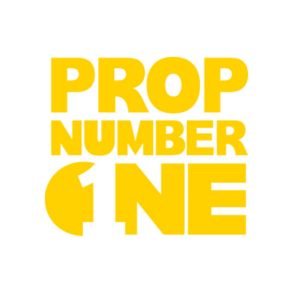
How to Start a 30-Day Money Challenge: A Step-by-Step Guide for Beginners
What Is the 30-Day Money Challenge?
The 30-Day Money Challenge is a fun and engaging way to jumpstart your savings and develop better financial habits. It encourages participants to save a set amount of money each day for a month, gradually increasing the amount to boost savings significantly. This challenge not only helps in building a healthy savings habit but also raises awareness about spending habits, making it easier to identify areas for improvement in personal finance.
Why Participate in a Money Challenge?
Participating in a money challenge can be incredibly beneficial for your financial health. Firstly, it creates a structured approach to saving, which can motivate you to set and achieve financial goals. Secondly, it helps in building discipline and awareness about your spending habits, fostering a more intentional relationship with your money. Lastly, completing a money challenge can lead to a significant amount saved over just one month, setting a strong foundation for future financial endeavors.
The Impact of a 30-Day Savings Challenge
Engaging in a 30-day savings challenge can lead to a transformative impact on your finances. The cumulative effect of daily savings can lead to hundreds of dollars saved by the end of the month, providing a sense of accomplishment. This newfound savings can be directed towards an emergency fund, a vacation, or paying down debt. The experience also equips you with the tools and mindset necessary for continued financial success beyond the 30 days.
Preparing for Your 30-Day Money Challenge
Setting Clear Financial Goals
Before diving into the 30-day money challenge, it’s crucial to set clear financial goals. Determine what you want to achieve by the end of the challenge. This could be saving for a specific purchase, building an emergency fund, or paying off a small debt. Clearly defined goals will give you something to strive for and keep you motivated throughout the challenge.
Deciding on Your Savings Strategy
There are various ways to approach the 30-day money challenge, and deciding on a strategy that works for you is essential. You can opt for a traditional method, where you increase the amount saved each day (e.g., starting with $1 on day one, $2 on day two, etc.). Alternatively, you can take a more straightforward approach by saving a fixed amount daily. Choose a method that aligns with your financial situation and will keep you motivated throughout the challenge.
Gathering Your Materials
To successfully complete the 30-day money challenge, gather any materials you might need. This could include envelopes for cash savings, a dedicated savings account, or budgeting apps to track your progress. Having a system in place will make it easier to manage your savings and keep you organized throughout the challenge.
Implementing the Challenge
Creating a Savings Plan
Once you’ve set your goals and decided on a strategy, create a savings plan to guide you through the challenge. Outline how much you plan to save each day, noting any adjustments needed based on your financial situation. Having a written plan will keep you accountable and provide a clear roadmap for your savings journey.
Setting Reminders and Tracking Progress
To stay on track with your savings, set reminders for yourself to contribute to your challenge daily. Whether it’s an alarm on your phone, a calendar reminder, or notes on your fridge, these nudges will help ensure you don’t forget to save. Additionally, consider tracking your progress in a journal or through an app to visualize how much you’ve saved over the month. This visual representation can serve as a motivator and provide a sense of accomplishment as you see your savings grow.
Sticking to Your Budget
While participating in the challenge, it’s essential to maintain a budget for your regular expenses. Review your monthly spending and identify areas where you can cut back to ensure you can save daily without financial strain. This might involve reducing discretionary spending, dining out less, or finding creative ways to enjoy activities for free. Staying committed to your budget will help you successfully complete the challenge while fostering better financial habits.
Overcoming Challenges During the Month
Addressing Unexpected Expenses
Life can be unpredictable, and unexpected expenses may arise during your challenge. To prepare for this, set aside a small emergency fund that you can tap into if necessary. This way, you won’t have to sacrifice your savings goals if an unexpected cost comes up. Additionally, reassess your savings for the month, and if needed, adjust your daily contributions to accommodate any unplanned expenses.
Staying Motivated Throughout the Month
Maintaining motivation throughout the 30 days can be challenging, especially as the novelty wears off. To keep your spirits high, remind yourself of your initial goals and the reasons you started the challenge. Consider joining online communities or social media groups where participants share their progress, tips, and encouragement. Celebrating small milestones along the way can also help maintain your motivation.
Finding Accountability Partners
Having someone to hold you accountable can significantly boost your chances of success in the 30-day money challenge. Share your goals with friends or family and encourage them to join you in the challenge. Alternatively, find an online accountability partner who can provide support and encouragement. Regular check-ins with your partner can help you stay committed and motivated throughout the month.
Celebrating Your Success
Tracking Your Total Savings
At the end of the 30 days, take the time to track your total savings. Calculate how much you saved throughout the challenge, whether it’s a significant amount or a smaller but meaningful sum. Reflecting on your accomplishments will provide a sense of achievement and show you the power of consistent saving.
Using Your Savings Wisely
Once you’ve completed the challenge and accumulated your savings, it’s essential to use the money wisely. Consider your initial goals and direct your savings toward them. Whether it’s funding an emergency fund, treating yourself to something special, or paying off a debt, be intentional about how you utilize your savings to maximize their impact on your financial situation.
Sharing Your Journey with Others
Sharing your success story can inspire others to embark on their own financial journeys. Consider documenting your experience through social media, a blog, or conversations with friends and family. Highlighting the positive changes you’ve experienced will encourage others to try the 30-day money challenge and promote the benefits of saving money consistently.
Maintaining Your Savings Momentum
Transitioning to Long-Term Savings Habits
Completing the 30-day money challenge is just the beginning of your savings journey. Use the skills and habits you developed during the challenge to transition into long-term savings practices. Continue setting financial goals, tracking your spending, and prioritizing savings as a vital aspect of your financial health.
Exploring Additional Savings Challenges
To keep the momentum going, consider exploring additional savings challenges beyond the 30 days. For instance, you might undertake a 52-week savings challenge, where you save an increasing amount weekly. Alternatively, you could create your own challenge tailored to your goals and financial situation. The key is to keep the savings mindset active and continually seek opportunities for growth.
Building a Support System
As you maintain your savings momentum, build a support system that encourages financial discipline and growth. Engage with online communities, join local financial workshops, or connect with friends who share similar financial goals. Having a network of like-minded individuals will help you stay accountable, motivated, and informed about new savings strategies and opportunities.
Conclusion and Next Steps
Reflecting on Your Financial Journey
As you wrap up your 30-day money challenge, take a moment to reflect on your financial journey. Consider what you’ve learned about your spending habits, savings priorities, and the importance of financial discipline. This reflection will help solidify the skills you’ve developed and provide valuable insights for future financial endeavors.
Setting New Financial Goals
After completing the challenge, it’s essential to set new financial goals to keep your momentum going. Use the lessons learned during the 30-day money challenge to inform your future savings strategies. Whether you aim to save for a big purchase, invest in your retirement, or pay off debt, establishing new objectives will keep you engaged and focused on your financial journey.
Embracing a Lifelong Savings Mindset
The 30-day money challenge is more than a one-time exercise; it’s an opportunity to cultivate a lifelong savings mindset. As you continue your financial journey, remember the principles of budgeting, accountability, and mindful spending that you practiced during the challenge. By embracing this mindset, you will be better equipped to manage your finances, make informed decisions, and work toward a secure financial future.

















